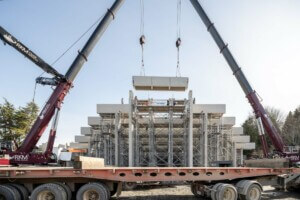It seems intuitive that a museum affiliated with a university should have classrooms. But in the case of the Yale Peabody Museum in New Haven, Connecticut, it took over 100 years for learning spaces to be placed in situ alongside its exhibition halls and galleries. In 1925, just after it opened for the second time in a new building, Richard Swan, the museum director and a Yale professor, commented on its lack of teaching space.
Now, the landmark New Haven building has the classroom space it’s always needed thanks to a recent renovation by a local Connecticut office. A total of twelve classrooms are now located throughout the Yale Peabody Museum and gone are the days when school visits were relegated to taking place in the workspaces meant for managing the collections.
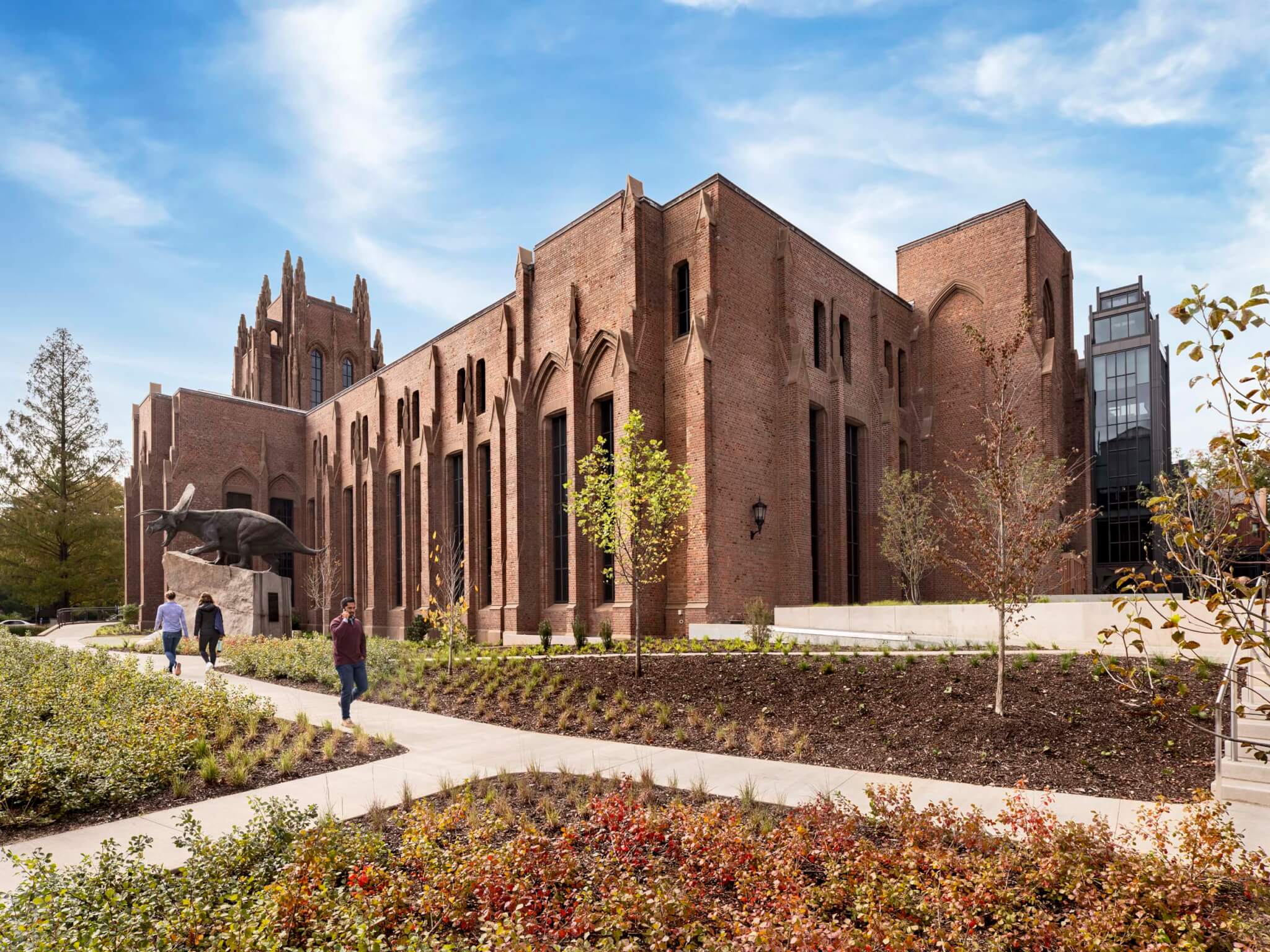
Mark Simon—a principal at Centerbrook Architects, the local firm behind the Yale Peabody Museum renovation and expansion project—described his office’s work on the New Haven institution as a “long voyage.” The museum first opened in 1876 and was demolished in 1917 to make way for a new dormitory. The collections were sent to storage until the 1925 building was erected. The gothic revival was modeled after much of the Yale University campus. Centerbrook was first tapped for the renovation project in 2004 but since then the museum’s needs have evolved.

When the project was first presented to Centerbrook, Yale Peabody required storage space to house its growing collection. To address this, nearly half of the museum’s collection was brought to a 19,000-square-foot facility on Yale’s West Campus. With the storage situation sorted, the museum and design team pivoted their concentration to improving circulation and entry access and adding classrooms to create a dynamic cultural venue where learning can continue for another 100 years.
Capacity for additional exhibition and classroom spaces wasn’t going to be found within the museum’s existing footprint. Simon described the original building as an “L-shape” with the geology department’s Environmental Science Center (ESC) located to the north end of the site. It was determined that the only viable location for the expansion was a “hole” between the existing museum and the ESC that formerly served as a loading dock. “It was tricky building,” Simon told AN. “The contractor said this was like building a ‘ship in a bottle.’ We had to have huge cranes to lift all the materials over the geology building, to drop it into the center of the block.” In other words, the architects found a solution that involved inserting a new building in between the footprint of two others.

This central, interstitial space between buildings was excavated downward to add basement space for additional storage. Then a steel frame was built within to fill up the “hole.” It was important to all involved that the extension still felt like the Peabody, meaning it had leaned into the Gothic elements of its neighboring predecessor yet with a contemporary touch. This was achieved through the pointed arches found at the entryways, a boxy take on decorative pinnacles, and glazing with thin mullions. Pockets of landscaping around the site were planned by Field Operations.
Daylight is drawn down into the extension via skylights. Sunlight fills the Central Gallery, which serves as an event space in the evenings and a lounge during museum hours. More references to gothic elements abound here, notably found in the pointed arch window and door elements.
Because the museum houses a horde of ancient artifacts, it’s surprising the existing building was never insulated, rather it was (for nearly 100 years) four layers of solid brick. Centerbrook Architects worked with a team of engineers to test various forms of insulation: they feared the exterior would be damaged since the structure was never insulated. Similarly, windows were replaced across the old building, doing away with steel to install a thicker aluminum product that resembled the original. The architects also opted to keep the original concrete flooring intact and simply polish it.
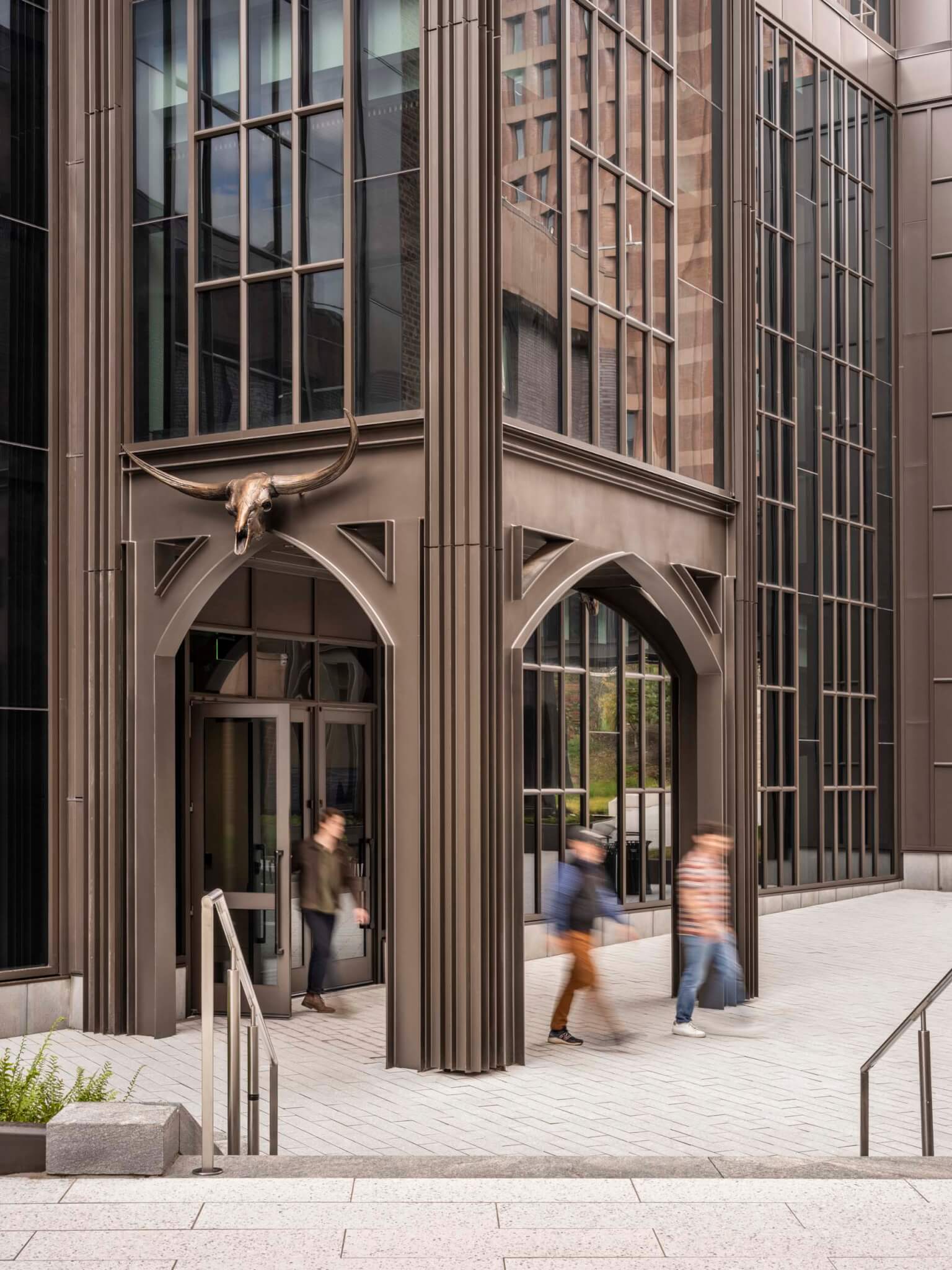
“Whether it was K to 12 groups or university students, there was no classroom associated with the museum,” David Skelly, director of the Yale Peabody Museum, recalled in an interview with AN. “And yet we have 14 million things to teach with and 14 million things to do research with and it wasn’t easy to connect our audiences that were interested in using these collections for all different kinds of purposes.”
In the permanent collection galleries, emphasis was placed on what Skelly dubbed “ease of turnover.” Centerbrook and the Yale Peabody Museum worked closely with exhibition designers Reich+Petch. In the museum’s previous iteration, vitrines required glass handlers to come in and dismantle the display case. An updated system now allows for faster access and, instead of a team of experts, just the hands of one individual. Now, the museum can more readily switch up the objects on view.
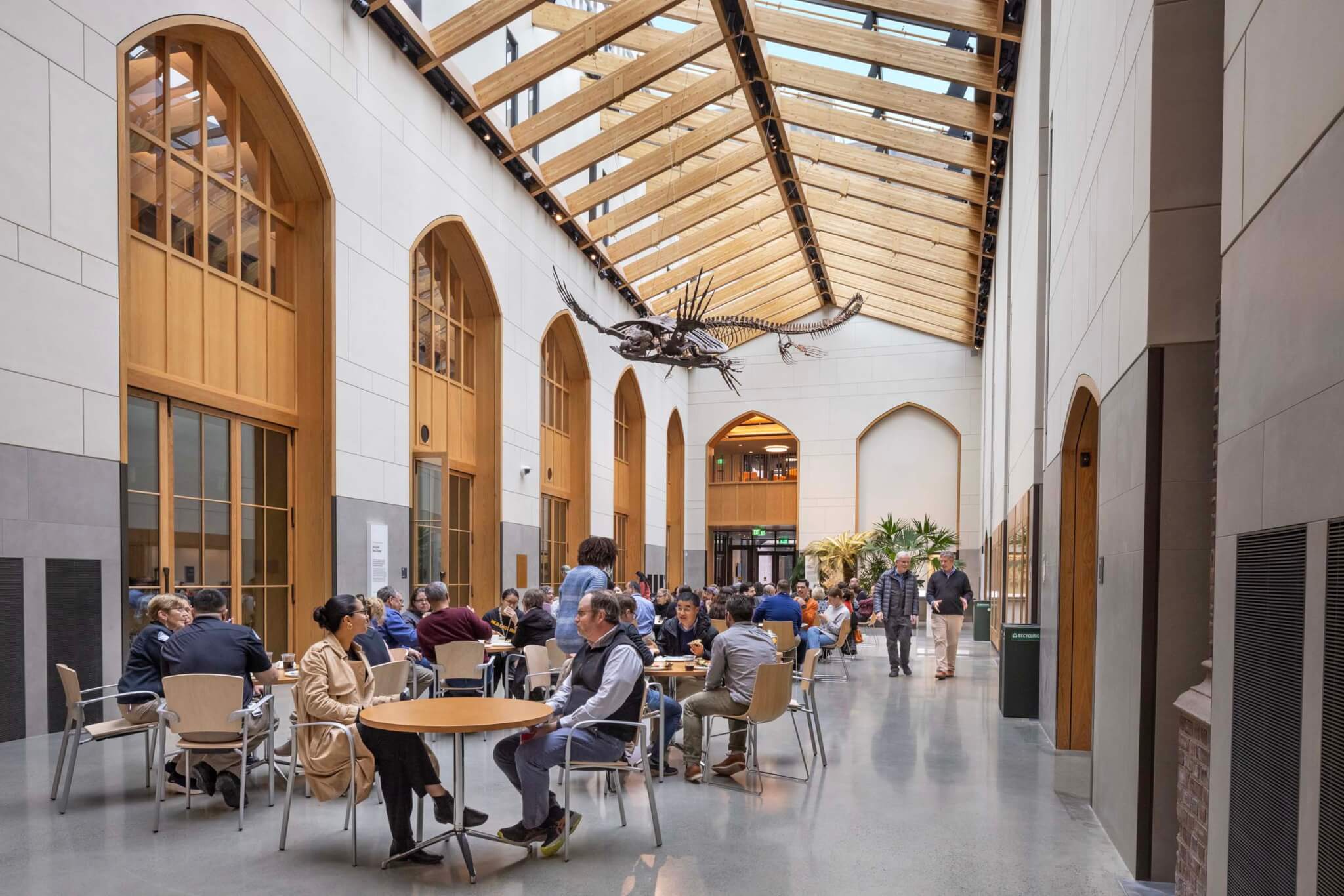
Alternatively, there are some museum objects that would never be taken off the display circuit. Yale Peabody’s blockbuster exhibits, a brontosaurus and al fresco mural, were treated with a high level of care and attention as the construction and renovation work took place around them.
During the renovation, the brontosaurus received an update of its own. It was taken apart bone by bone, worked on, and reframed by Research Casting International (RCI) at its lab in Canada. When the brontosaurus was remounted, some 40 bones previously housed in storage were added to the fossil and its tail was repositioned to point upward, rather than downward, to comply with a recent discovery made by scientists about the prehistoric creature.
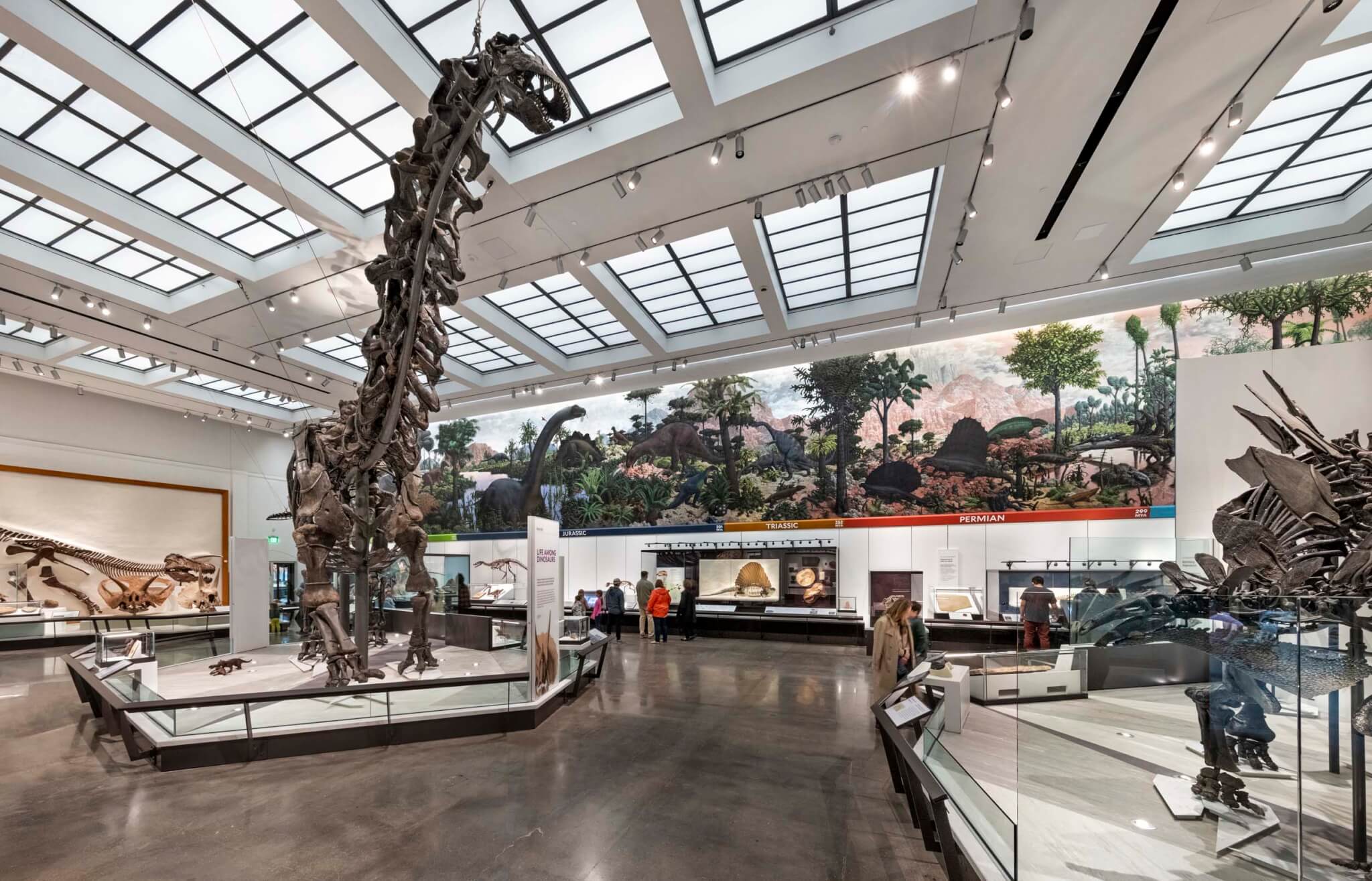
Even the renovation led to new discoveries in the building itself: in the collection storage space behind a wooden cabinet, fossils built into the wall were unveiled. Skelly said the museum’s paleontologists and conservators recommended they be left in place, so the team at Centerbrook pivoted its design again to make it seem like the fossil wall was always “an intended design element.”
As for the murals, during construction, keeping the temperature and climatic conditions in range was paramount. Turner, the construction firm, built structures around the frescoes to keep them protected, and curators were able to move them up to check for signs of damage. And now, the Yale Peabody has big plans for the massive art pieces. It hopes to launch a design competition for another mural that would serve as response to The Age of Reptiles, the work by Rudolph Zallinger depicts a span of nearly 350 million years in Earth’s history.
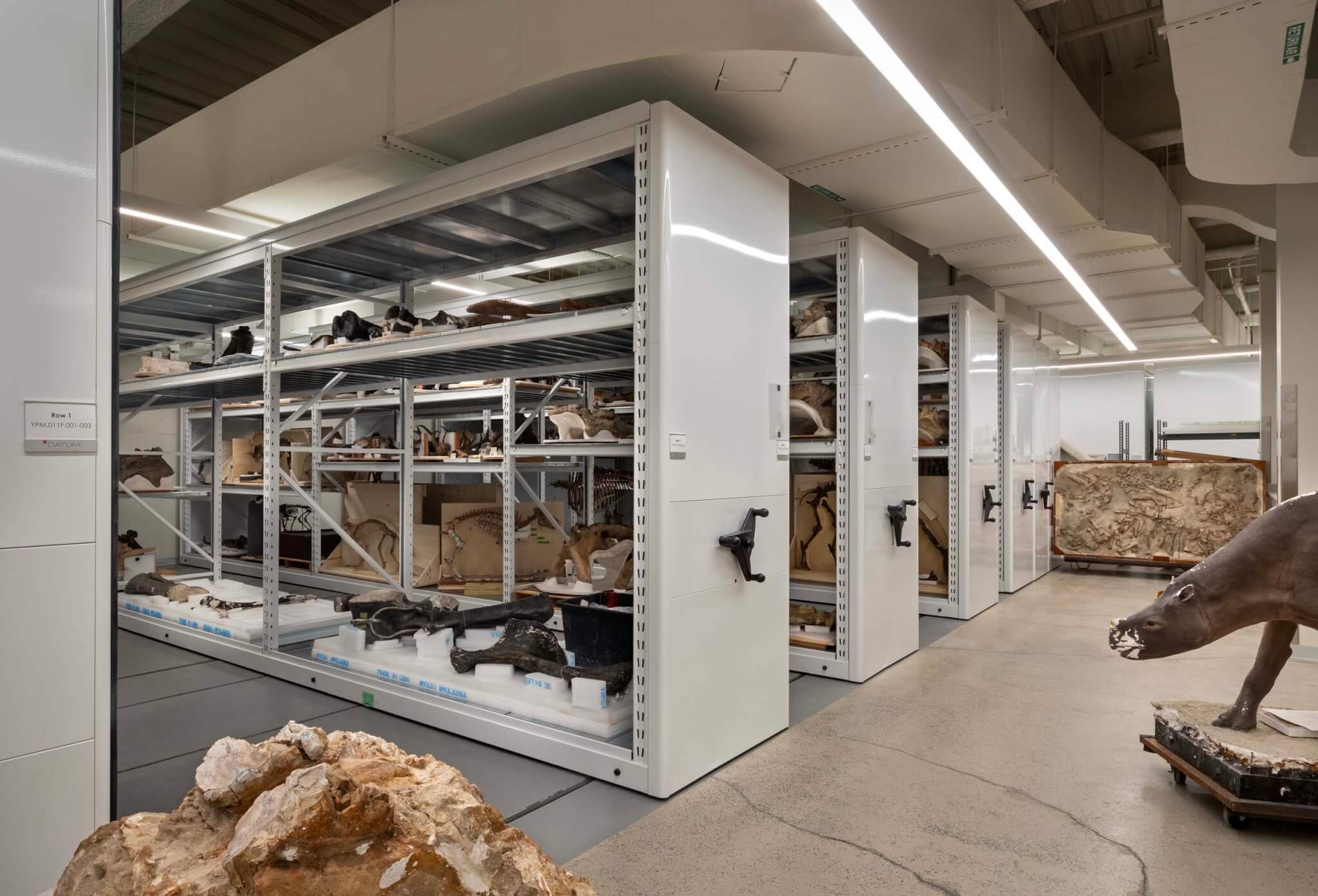
“But what I want as a goal for [the new mural] is that when somebody comes in to Burke Hall, and they look up at the historic fresco, and then they see this new mural, they’ll get it that in the time between when the first mural and the new mural was painted we’ve learned some things,” Skelly said. “And that’s a great lesson. If that’s all people get from that is that scientists learn and they change their understanding and that a place like our museum is designed to reflect that latest understanding, we can pack up and go home. That’s part of the job. Job accomplished.”








